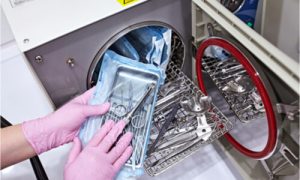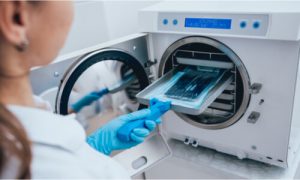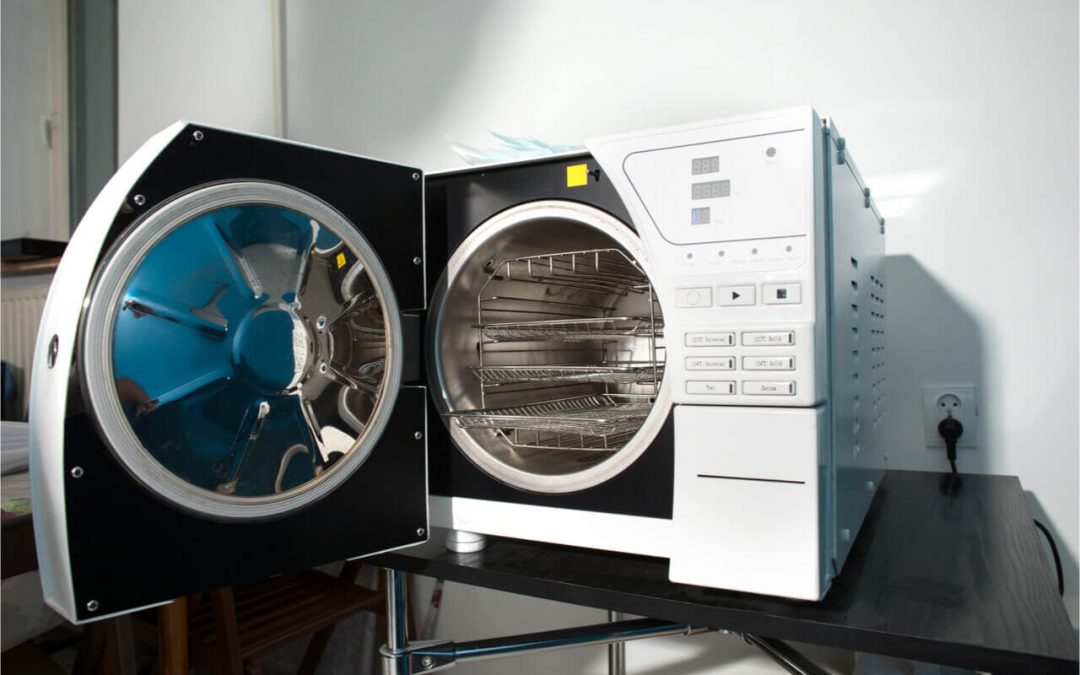When you go to your dentist for a dental procedure, having the assurance that the dental instruments and tools that would be used in your mouth are sterilised is in fact a no-brainer. So how do you think your dentist does it? Well, sterilising instruments is made easy, thanks to the odd-looking ‘vault or microwave oven’ in your dentist’s office. This is the dental autoclave machine. Some of you may know what it is for, but there are also some who wonder how it works. Let us understand the importance of having an autoclave machine in the dental setting and how your dentist uses it.
Sanitation and Sterilisation in Dentistry
Concerns about the sanitation of medical, dental, and scientific instruments have existed for many years. These instruments can’t be washed with water or wiped clean with a regular brush or towel. They must be carefully cleaned since microbes and germs are stubborn and cannot be removed using standard cleaning procedures. After washing, you still need to eliminate the bacteria on them to make the instrument clean and safe to use on a patient. The best approach to destroy these microbes is to expose them to extreme settings, which is where a dental or medical autoclave comes in.
Autoclave machines
Autoclaves, often known as steam sterilizers, are commonly employed in medical and industrial settings. An autoclave is a machine that kills hazardous bacteria, viruses, fungus, and spores on goods that are placed within a pressure vessel using steam under pressure. The goods are heated to a sterilizing temperature and held there for a certain period of time. The moisture in the steam efficiently transmits heat to the objects, destroying the bacteria and spores’ protein structure.
How does an autoclave work?
 In healthcare settings, autoclaves are routinely used to sanitise medical instruments. The materials to be sterilized are put within a pressure vessel, also known as a chamber. In order to achieve good steam sterilization in an autoclave, three parameters must be considered: time, temperature, and steam quality.
In healthcare settings, autoclaves are routinely used to sanitise medical instruments. The materials to be sterilized are put within a pressure vessel, also known as a chamber. In order to achieve good steam sterilization in an autoclave, three parameters must be considered: time, temperature, and steam quality.
Time required
The exposure time is the amount of time it takes to sterilize the device. This is different from the complete cycle period. For appropriate steam sterilization, there is a time/temperature connection that has been discovered via scientific research and is employed in all sterilization processes to generate what is known as the total exposure phase. The exposure time of steam sterilization vary depending on the size, shape, weight, density, and material composition of the equipment being sterilized, among other things.
Autoclave Temperatures
Steam sterilization temperatures are typically 250° F (121° C) to 275°F (135° C) above atmospheric pressure. The materials being sterilized must be subjected to this elevated temperature for the minimum duration suggested by the manufacturer of the equipment being treated to destroy any microbes present.
Steam Quality
An effective autoclave sterilizing procedure requires high-quality steam. at the beginning of your sterilization process, your autoclave’s vacuum pump removes as much air as it could, since air inhibits sterilization. This is where the pressurised steam forms. The steam used for sterilizing should have 97% steam (vapour) and 3% moisture (liquid water). For the most effective heat transmission, this ratio is suggested. If the steam-moisture ratio fails to reach 3% moisture, this is what experts call superheated steam, making it inefficient to sterilise instruments in medical or dental practice.
What materials can be autoclaved?
 The basic idea of steam sterilization in an autoclave is to subject each material to direct steam contact for the prescribed period at the appropriate temperature and pressure. As a result, steam sterilization has four parameters: steam, pressure, temperature, and time. The items that you can autoclave, therefore, should be able to withstand these four parameters without being damaged.
The basic idea of steam sterilization in an autoclave is to subject each material to direct steam contact for the prescribed period at the appropriate temperature and pressure. As a result, steam sterilization has four parameters: steam, pressure, temperature, and time. The items that you can autoclave, therefore, should be able to withstand these four parameters without being damaged.
Technically speaking, handpieces, glassware, and instruments made with stainless steel are all autoclavable. The tips of your dental handpieces can also be autoclaved but should be placed in a small container so as not to be misplaced in the autoclave chamber. If you have other dental materials that need to be sterilised but you are unsure if they are safe for autoclaving, you have to put them in autoclavable biohazard bags and exposed them to a steam setting.
Choosing your Dental Autoclave Machine
When choosing to buy a reliable piece of dental equipment that is of great significance to your dental practice always, keep in mind to choose one that comes from an established manufacturer or a company that can give you high-quality equipment. MELAG Autoclaves have proven to many dental practitioners their reliability, efficiency, and long-lasting service, prioritising quality and performance without compromise.
MELAG is a well-known supplier of high-end reliable autoclaves with different capacities, all depending on the size of your clinic. We offer our products at competitive costs, letting you improve your dental practice without breaking the bank. Warranty and post-sales services? MELAG Autoclaves got you all covered.
So if you are looking for a dental autoclave sterilizer or steam sterilizer that can offer a successful steam sterilization cycle, choose a MELAG Autoclave! Do not hesitate to give us a call so we can assist and guide you into getting the appropriate machine for your office’s needs. Moreover, if you think you need an upgrade to the advanced MELAG system, contact Melag Autoclave at (02) 8880 7813 or visit our website to know more.
References:
https://tuttnauer.com/blog/autoclave
https://www.steris.com/healthcare/knowledge-center/sterile-processing/everything-about-autoclaves
https://www.grainger.com/know-how/equipment-information/kh-how-does-autoclave-sterilization-work
https://www.cdc.gov/infectioncontrol/guidelines/disinfection/sterilization/steam.html


